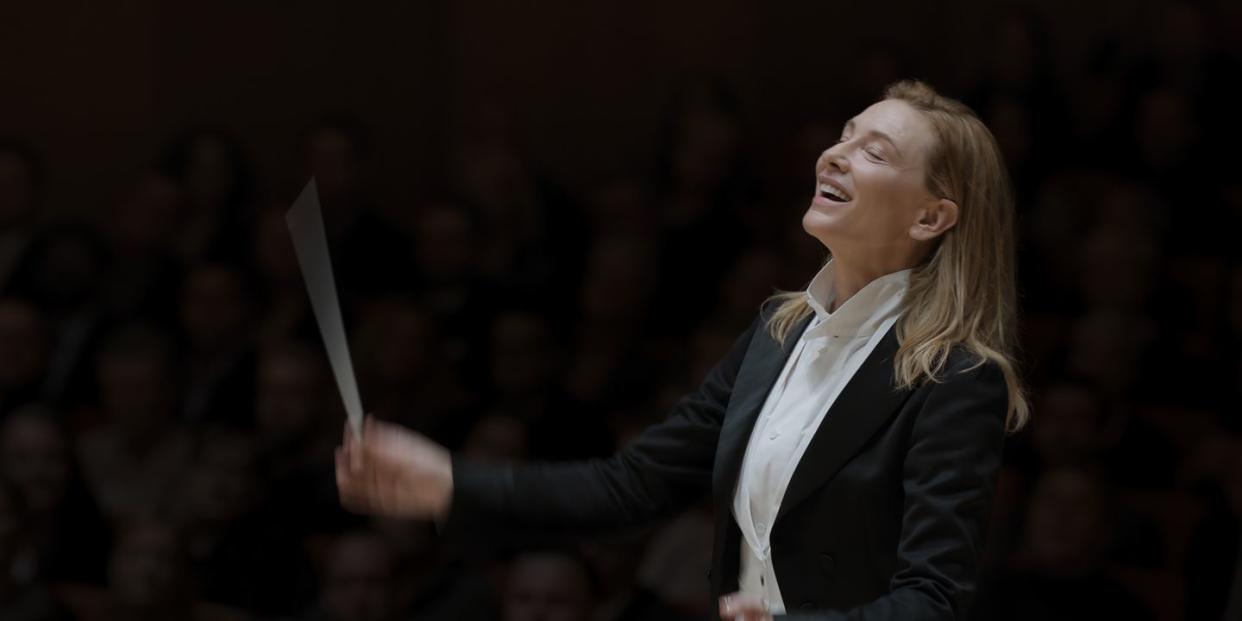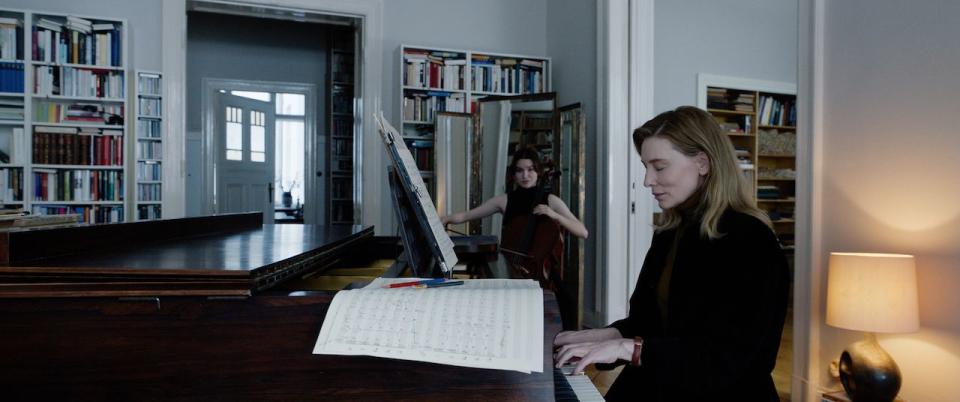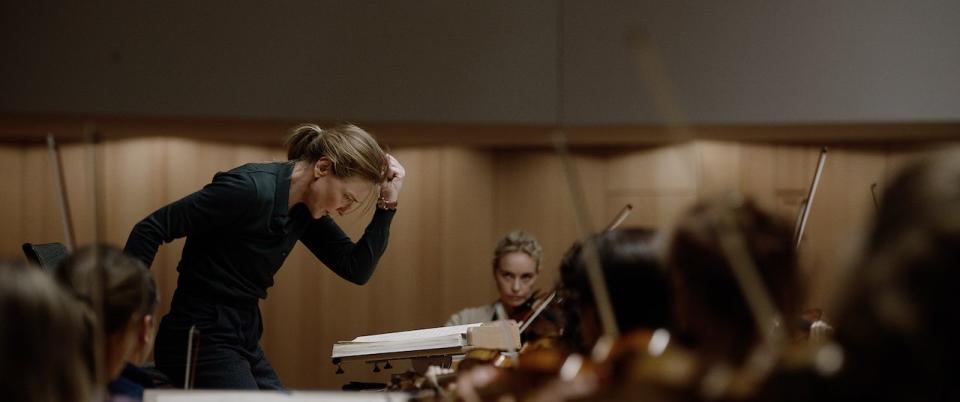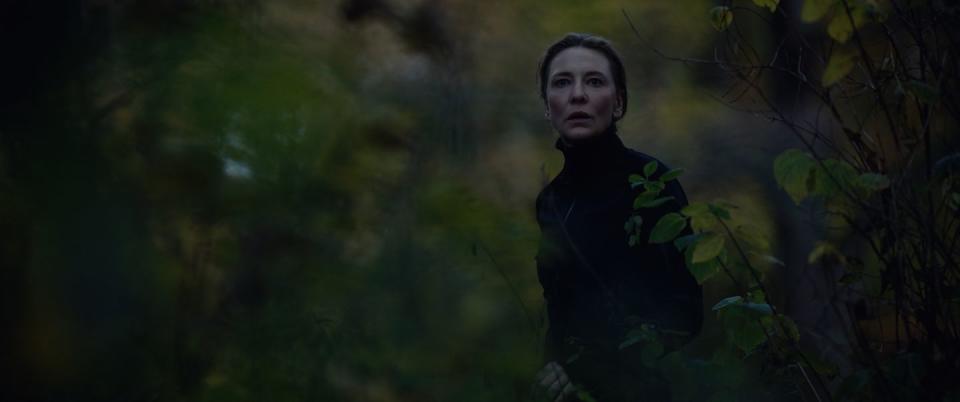The Beautiful Bespoke Suiting in 'Tár' Will Make You Weep

- Oops!Something went wrong.Please try again later.
"Hearst Magazines and Yahoo may earn commission or revenue on some items through the links below."
Tár works like an ocean wave, dragging you under and spitting you out, head spinning. The film is a nuanced, thorny portrait of a person in crisis—Lydia Tár, played by Cate Blanchett, an imperious and world-renowned Berlin orchestra conductor embroiled in a #MeToo-type scandal—that asks many more questions than it answers, about empathy, cancel culture, and the legacy of artistic giants who abuse their positions and power. After a recent screening, I found myself struggling to make sense of what I’d just seen. But I did have one solid truth to cling to, which is that the fictional Tár has an incredible wardrobe.
Like her approach to music, Tár’s fashion is about both precision and artistic abandon. She makes public appearances in immaculate bespoke suits and rehearses in a beautifully rumpled button-down with the sleeves rolled to the elbows. She’s an expert at layering, wearing turtlenecks under collared shirts and blazers, or casually tossing a sweater over her shoulders. Her coat is an oversized black number from The Row, a perfect brand for someone whose look is distinctive and subtle, with a color palette big on cream, stone, and navy. Tár’s pulled-together outfits grow messier as her life begins to fall apart, but at the height of her success, her style has an enviable quality: elegance that seems effortless.
The more I think about Tár’s excellent fashion sense, though, the more I start to distrust it. In a film this carefully constructed, it’s not incidental that her material lifestyle is deeply seductive, from her expensive clothes to her modern apartment filled with designer furniture. Instead, aspiration feels like a clever tool to implicate you, the viewer, in Tár’s immoral, often cruel way of moving through the world. A great suit may not get you to empathize with her, per se, but it certainly forces you to admit that you want what she has—and, perhaps, to tacitly validate how she got it.

Tár is obsessed with her image and place within the pantheon of historic, mostly male conductors. Clothing is a key piece of that self-mythology, a point that’s clear from the opening scene, in which she presides over a fitting for a custom suit. In a recent interview with BAZAAR.com, Tár costume designer Bina Daigeler tells me that when she started working on the movie, she researched the fashion of famous conductors, determining that while women in the field often have a keen sense of personal style, they tend not to draw too much attention to their clothing, lest it distract from the performance. Tár is interested in claiming her spot beside the great, white men of classical music, though, and to that end, Daigeler also drew on the style of influential male conductors. The Austrian conductor Herbert von Karajan was a particular point of inspiration, with his trim suits and chic sweaters. “He had a classic, elegant wardrobe style,” Daigeler tells me. “I wanted to reflect this in her costume.”

In a movie about a musical luminary being held to account, at least to some extent, Karajan is a telling point of reference: He was a member of the Nazi party, an affiliation that advanced his career in Germany at the time but also didn’t prevent him from achieving international success in the decades after the war.
The foundation of Tár’s style is a bespoke suit, putting her in conversation with both her male predecessors and queer fashion history. (She self-describes as a “U-Haul lesbian.”) Daigeler sought out the Berlin-based tailor Egon Brandstetter, whose real-life shop appears in the movie’s opening scene, to make suits for Blanchett. The costume designer then added several more modern suits to Tár’s closet, including versions from Lemaire and Dries Van Noten. “That gave her a very personal style,” Daigeler told me. “There was a pleated pant, non-pleated pant, bigger shoulder, smaller shoulder.”
Because Tár shot during the autumn, Daigeler also dressed Blanchett in an array of pullover sweaters, sweater vests, and cardigans. This served several functions: In addition to its practicality, knitwear enabled Daigeler to add color to Tár’s quiet color palette and soften her sharp tailoring. Hand-knitted sweaters also helped communicate Tár’s appreciation for “good craft work,” Daigeler told me, pointing to a dark red and green cardigan from the German brand Wolfen that Tár wears while working alone. Plus, luxurious knits played well in the palatial Berlin apartment that Tár shares with her partner Sharon (Nina Hoss), the first violinist in the orchestra that Tár leads, and their young daughter. “Somebody who lives in this super beautiful apartment has only nice sweaters,” Daigeler pointed out. “They don’t wear something that’s itchy.”

Despite Tár’s taste for nice things, Daigeler sees her as someone who can make do with a lot less — who, as we learn, comes from relatively humble origins. Tár wears a watch but little other jewelry, and she’s not big on makeup or blowouts. “In reality, she lives only for the music,” Daigeler said. In the scenes where Tár is composing alone at a piano in the sparsely decorated apartment that she keeps for her work, Daigeler dressed Blanchett more simply, in jeans and sweaters.
But as much as Tár can live a somewhat monastic musical life, her overwhelming drive is for fame and fortune. For her, exquisite clothes are a tool to solidify her success and power. For moviegoers, on the other hand, they’re a destabilizing measure, bringing our tastes and aspirations into uncomfortably close alignment with those of a detestable person.
You Might Also Like

